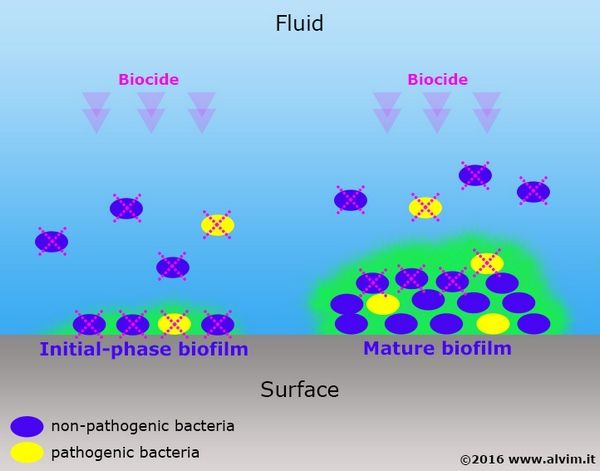Preventing Salmonella in food production plants
Published on by Giovanni Pavanello, Director at ALVIM Biofilm Monitoring Technologies
Even when it is not directly formed by pathogenic bacteria, biofilm represents the ideal environment for the survival and growth of dangerous microorganisms, such as Salmonella. Most bacteria, including Salmonella, live mainly attached to surfaces (as biofilm), more than free in the water.
Moreover, biofilm is much more resistant (up to 1000x) to sanitation treatments than free-floating bacteria, and biofilm resistance increases with time.

In order to prevent potentially harmful contaminations, it is strictly needed to keep biofilm growth under control, applying cleaning/sanitation treatments as soon as bacteria start to colonize surfaces in contact with the water.
By-law analyses are carried out on water samples, aimed at quantifying free-floating bacteria. This does not give any indication about biofilm presence/growth: after the settlement of the first bacteria coming from the water bulk, biofilm dynamics is almost completely unrelated to the presence/number of bacteria in the water, because settled bacteria duplicate themselves, growing exponentially.
For such reasons, to efficiently prevent Salmonella outbreaks, a biofilm monitoring strategy should be applied.
Read more at: http://biofilm.online/salmonella_monitoring_prevention
Taxonomy
- Food Security
- Bacteria
- Waterborne Pathogens
- Water Monitoring
- Water Systems Monitoring
- Food Processing
- Biofilm Monitoring Systems
- Water Quality Monitoring
- Salmonella
- Food safety
- Monitoring Devices
- Monitoring Technology
- Biofilm Sensors